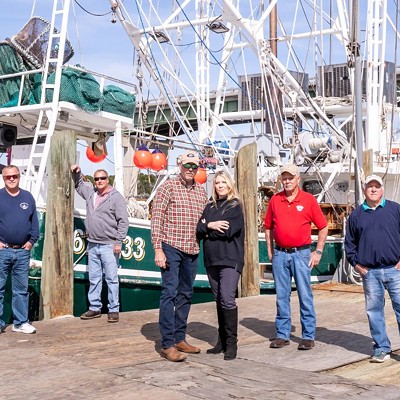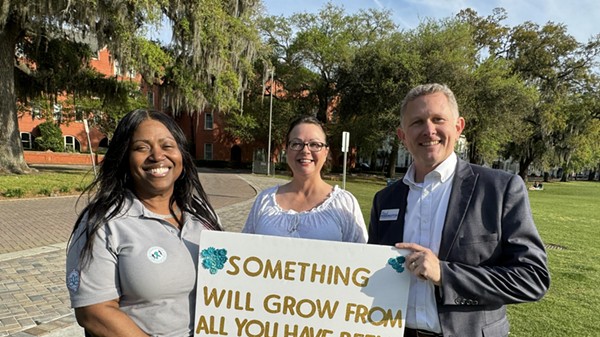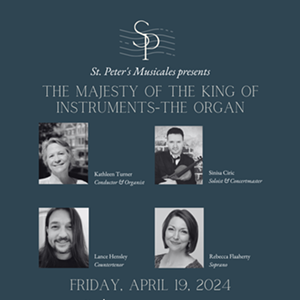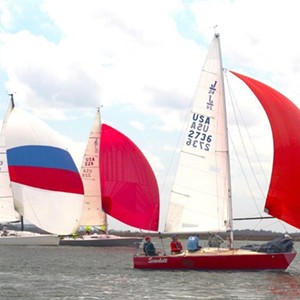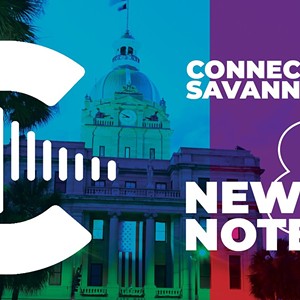NOAA's ark
[
{
"name": "Air - MedRect Combo - Inline Content 1",
"component": "14680855",
"insertPoint": "7",
"requiredCountToDisplay": "5",
"parentWrapperClass": "fdn-ads-inline-content-block"
},{
"name": "Air - MedRect Combo - Inline Content 2",
"component": "14680856",
"insertPoint": "15",
"requiredCountToDisplay": "9",
"parentWrapperClass": "fdn-ads-inline-content-block"
},{
"name": "Air - SVP - Leaderboard - Inline Content - 2",
"component": "16852291",
"insertPoint": "10",
"requiredCountToDisplay": "10",
"parentWrapperClass": "fdn-ads-inline-content-block"
},{
"name": "Air - SVP - Leaderboard - Inline Content - 3",
"component": "16852292",
"insertPoint": "20",
"requiredCountToDisplay": "18",
"parentWrapperClass": "fdn-ads-inline-content-block"
},{
"name": "Air - SVP - Leaderboard - Inline Content - 1",
"component": "16852290",
"insertPoint": "25",
"requiredCountToDisplay": "22",
"parentWrapperClass": "fdn-ads-inline-content-block"
}
]
There are visitors at Grays Reef National Marine Sanctuary.
The NOAA Ship Nancy Foster, a research vessel, has been on station since May 11 at Grays Reef, which is located 17.5 nautical miles off Sapelo Island in the Atlantic Ocean. The ship will depart June 2.
The 187-foot research vessel has provided a platform for various scientific projects, including measuring fish populations and exploring the invertebrate community.
During a recent visit to the ship, Grays Reef Science Coordinator Greg McFall explained the need for research. Were looking at how invertebrate communities are structured, he says. Some invertebrates, when they settle here, can reproduce and spread out from this point.
Others come from much farther away. The Gulf Stream is not far, McFall says. Larvae come up on the Gulf Stream and metamorphose into a form that allows them to settle on the bottom and grow to adult form.
Scientists are looking at sponges and coral to learn about their life processes at Grays Reef. While some coral populations are locally grown, others come from very far away, McFall says.
Grays Reef houses species from both tropical and temperate climates. We have a very unique environment, McFall says.
Species come from as far north as Cape Hatteras, N.C., and as far south as Cape Canaveral, Fla. Its important to understand how the ecosystem supports fish and how the ecosystem is sustained, McFall says.
Grays Reef is especially fertile because it is a submerged hard bottom area that contains extensive limestone outcroppings. The hard bottom, also called a live bottom, provides a solid base for invertebrates to attach and grow.
The invertebrates attract bait fish which in turn attract fish such as black sea bass, snapper, grouper and mackerel, making Grays Reef a recreational fishermans paradise. The surrounding areas are much less diverse than Grays Reef, says Sanctuary Manager Reed Bohne.
Grays Reef is important as a place where loggerhead sea turtles, a threatened species, can forage and rest during mating season. It also is part of the only known winter calving ground for the highly endangered northern right whale.
NOAA works closely with universities on programs that help monitor the reef. Were out here with four grad students and two others who are helping us, says Dr. Danny Gleason of Georgia Southern University. We have a lot of programs going on.
Todays big find is a dead sea sponge that is loaded with brittle stars. The sponge is photographed and preserved for further study. It will end up in our field guide, Gleason says.
One of the most important projects at Grays Reef is monitoring the area to see how it has been changed or damaged over time. We want to know how big the change is and how long it will take to recover, Gleason says. Grays Reef gives us permission to go down and clean 1-foot by 1-foot areas.
Frames built from PVC pipe are used to create the areas, which are photographed, then left alone to recover. Stainless steel rods are used to ensure the camera is placed in the exact same area the next time.
The study started last July, Gleason says. The bottom has not recovered at all. It takes a long time for it to recover.
Graduate student Rob Ruzicka is studying sponges and the predators that feed on them. He dives to collect specimens from the ledges and also from the flat bottom.
What Ruzicka has learned is that there are fewer predators in the flat areas than on the ledges. Im looking to see if the sponges are accounting for predators, he says. Do the ones on the ledge have protection through chemicals or physical traits that enable them to live on the ledge?
Ruzicka extracts chemicals from the sponge and puts them into squid-based food cubes. The food cubes are then offered to fish to see if they eat them.
There are a lot of angel fish out here, Ruzkica says. They are the primary predator of sponges.
Graduate student Chris Freeman also is studying sponges. He is taking chemicals from three different species.
We separate the inner and outer tissue and extract the chemicals separately, Freeman says. I also make food cubes and feed them to starfish to see if they eat them or not.
Freeman also measures concentrations of the compounds found in the tissue samples. Some of the chemicals are taken to the GSU chemistry department for analyzing. There is much interest in sponges because of their potential use in pharmaceuticals.
Graduate student Lauren Wagner is studying coral. We are working with coral to look at the dispersal to see if it is self-seeding or recruiting, she says.
In other words, is the coral locally grown or imported?
Wagner was born far away from the ocean. Im from Ohio, which is kind of a land-locked state, she says. I guess I wanted to get out to see the ocean and was fortunate to have the opportunity.
Graduate student Leslie Bates is researching induce-able defense in sponges. The chemicals in sponges vary after they are attacked by predators, and Bates is trying to find out how and why.
Something has to happen to trigger this, she says. It could be anything.
The sponge must be injured to elicit this response. I stimulate bites by using a razor, Bates says. I mechanically injure them. Then I see if there is a change in their composition. This helps us better understand the fragility of the ecosystem.
Not all of the students are from GSU. Patrick Erwin is a doctoral candidate from the University of Alabama at Birmingham.
We do a lot of genetics work, Erwin says. A lot of sponges have a different morphology. They are all the same species, but they look different because of their environment. Im really interested in sponges because you see so many interesting genotypes.
Erwin also is looking at symbiosis, an association of two species for mutual advantage. There are symbionts within sponges, he says. When the sponges lose symbionts, they start bleaching out and become white.
Were not sure how the bleaching affects them, Erwin says. We are seeing some sponges detaching and falling off that are really bleached. They have no symbionts.
When the weather cooperates, the scientists can expect to dive below the oceans surface to collect specimens two to three times a day. Most sites we go down 70 feet, but we do go down 90 to 100 feet at times, Erwin says.
In addition to university students, members of the NOAA Corps also are on board. The NOAA Corps was established in 1807 when President Thomas Jefferson sought to survey the coast.
NOAA Corps officers, who are recruited as engineering, math and science students at universities around the country, serve at sea aboard NOAA research and survey ships, and also serve ashore in NOAA labs and offices.
Tracy Hamburger is an ensign in the NOAA Corps. Im a junior officer, a navigational specialist and also a ships diver, she says.
Although the Nancy Foster looks spartan, it does have its comforts. We have cool air conditioning and hot showers, Hamburger says. We never run out of water. We are always making water with our fresh water/salt water system.
Up on the bridge, Amanda Middlemiss, a lieutenant junior grade in the NOAA Corps, is steering the ship. It is not uncommon to see crab pots and debris in the ocean, she says. We always see a lot of balloons, she says.
Efforts are made to pluck balloons from the sea because marine animals can become ensnared in their strings or ingest the plastic.
The ships captain is Commander Jamie Verlaque. Were responsible for all charting out to 200 miles in the continental U.S., including Alaska, he says. Were all jacks-of-all-trades. I drive the ship and collect data.
NOAA maintains close relationships with the U.S. Navy and Coast Guard, Verlaque says. The Navy turns over its ships to us when they are 10 or 11 years old, he says. That, to us, is new.
We take the ships and convert them, Verlaque says. In return, when they need our help, were there.
NOAA ships help in search-and-rescue operations and recovery of planes that have crashed. It was NOAA ships that recovered John F. Kennedy Jr.s downed plane, an operation in which Verlaque took part.
While work takes up most of the day, the crew does get time for play. There is a gym on board, and satellite television to watch.
Proceeds from the soda machine paid for the gym equipment and a television that is used down below. Its for crew morale, Hamburger says.
No matter whether the crew is at work or play, life at sea is never dull.
We see the most interesting things, McFall says. We have a couple of yellow-billed cuckoos on board. Weve also had a sandpiper and a flycatcher. I have seen some land birds Ive never seen on the shore when I come to sea.
A lot of birds get blown out to sea and will land on anything they can find, McFall says. A couple of herons just flew by. We have a lot of flies on board, and the little flycatcher was just as fat and happy as it could be. w
To comment on this story, e-mail us at
The NOAA Ship Nancy Foster, a research vessel, has been on station since May 11 at Grays Reef, which is located 17.5 nautical miles off Sapelo Island in the Atlantic Ocean. The ship will depart June 2.
The 187-foot research vessel has provided a platform for various scientific projects, including measuring fish populations and exploring the invertebrate community.
During a recent visit to the ship, Grays Reef Science Coordinator Greg McFall explained the need for research. Were looking at how invertebrate communities are structured, he says. Some invertebrates, when they settle here, can reproduce and spread out from this point.
Others come from much farther away. The Gulf Stream is not far, McFall says. Larvae come up on the Gulf Stream and metamorphose into a form that allows them to settle on the bottom and grow to adult form.
Scientists are looking at sponges and coral to learn about their life processes at Grays Reef. While some coral populations are locally grown, others come from very far away, McFall says.
Grays Reef houses species from both tropical and temperate climates. We have a very unique environment, McFall says.
Species come from as far north as Cape Hatteras, N.C., and as far south as Cape Canaveral, Fla. Its important to understand how the ecosystem supports fish and how the ecosystem is sustained, McFall says.
Grays Reef is especially fertile because it is a submerged hard bottom area that contains extensive limestone outcroppings. The hard bottom, also called a live bottom, provides a solid base for invertebrates to attach and grow.
The invertebrates attract bait fish which in turn attract fish such as black sea bass, snapper, grouper and mackerel, making Grays Reef a recreational fishermans paradise. The surrounding areas are much less diverse than Grays Reef, says Sanctuary Manager Reed Bohne.
Grays Reef is important as a place where loggerhead sea turtles, a threatened species, can forage and rest during mating season. It also is part of the only known winter calving ground for the highly endangered northern right whale.
NOAA works closely with universities on programs that help monitor the reef. Were out here with four grad students and two others who are helping us, says Dr. Danny Gleason of Georgia Southern University. We have a lot of programs going on.
Todays big find is a dead sea sponge that is loaded with brittle stars. The sponge is photographed and preserved for further study. It will end up in our field guide, Gleason says.
One of the most important projects at Grays Reef is monitoring the area to see how it has been changed or damaged over time. We want to know how big the change is and how long it will take to recover, Gleason says. Grays Reef gives us permission to go down and clean 1-foot by 1-foot areas.
Frames built from PVC pipe are used to create the areas, which are photographed, then left alone to recover. Stainless steel rods are used to ensure the camera is placed in the exact same area the next time.
The study started last July, Gleason says. The bottom has not recovered at all. It takes a long time for it to recover.
Graduate student Rob Ruzicka is studying sponges and the predators that feed on them. He dives to collect specimens from the ledges and also from the flat bottom.
What Ruzicka has learned is that there are fewer predators in the flat areas than on the ledges. Im looking to see if the sponges are accounting for predators, he says. Do the ones on the ledge have protection through chemicals or physical traits that enable them to live on the ledge?
Ruzicka extracts chemicals from the sponge and puts them into squid-based food cubes. The food cubes are then offered to fish to see if they eat them.
There are a lot of angel fish out here, Ruzkica says. They are the primary predator of sponges.
Graduate student Chris Freeman also is studying sponges. He is taking chemicals from three different species.
We separate the inner and outer tissue and extract the chemicals separately, Freeman says. I also make food cubes and feed them to starfish to see if they eat them or not.
Freeman also measures concentrations of the compounds found in the tissue samples. Some of the chemicals are taken to the GSU chemistry department for analyzing. There is much interest in sponges because of their potential use in pharmaceuticals.
Graduate student Lauren Wagner is studying coral. We are working with coral to look at the dispersal to see if it is self-seeding or recruiting, she says.
In other words, is the coral locally grown or imported?
Wagner was born far away from the ocean. Im from Ohio, which is kind of a land-locked state, she says. I guess I wanted to get out to see the ocean and was fortunate to have the opportunity.
Graduate student Leslie Bates is researching induce-able defense in sponges. The chemicals in sponges vary after they are attacked by predators, and Bates is trying to find out how and why.
Something has to happen to trigger this, she says. It could be anything.
The sponge must be injured to elicit this response. I stimulate bites by using a razor, Bates says. I mechanically injure them. Then I see if there is a change in their composition. This helps us better understand the fragility of the ecosystem.
Not all of the students are from GSU. Patrick Erwin is a doctoral candidate from the University of Alabama at Birmingham.
We do a lot of genetics work, Erwin says. A lot of sponges have a different morphology. They are all the same species, but they look different because of their environment. Im really interested in sponges because you see so many interesting genotypes.
Erwin also is looking at symbiosis, an association of two species for mutual advantage. There are symbionts within sponges, he says. When the sponges lose symbionts, they start bleaching out and become white.
Were not sure how the bleaching affects them, Erwin says. We are seeing some sponges detaching and falling off that are really bleached. They have no symbionts.
When the weather cooperates, the scientists can expect to dive below the oceans surface to collect specimens two to three times a day. Most sites we go down 70 feet, but we do go down 90 to 100 feet at times, Erwin says.
In addition to university students, members of the NOAA Corps also are on board. The NOAA Corps was established in 1807 when President Thomas Jefferson sought to survey the coast.
NOAA Corps officers, who are recruited as engineering, math and science students at universities around the country, serve at sea aboard NOAA research and survey ships, and also serve ashore in NOAA labs and offices.
Tracy Hamburger is an ensign in the NOAA Corps. Im a junior officer, a navigational specialist and also a ships diver, she says.
Although the Nancy Foster looks spartan, it does have its comforts. We have cool air conditioning and hot showers, Hamburger says. We never run out of water. We are always making water with our fresh water/salt water system.
Up on the bridge, Amanda Middlemiss, a lieutenant junior grade in the NOAA Corps, is steering the ship. It is not uncommon to see crab pots and debris in the ocean, she says. We always see a lot of balloons, she says.
Efforts are made to pluck balloons from the sea because marine animals can become ensnared in their strings or ingest the plastic.
The ships captain is Commander Jamie Verlaque. Were responsible for all charting out to 200 miles in the continental U.S., including Alaska, he says. Were all jacks-of-all-trades. I drive the ship and collect data.
NOAA maintains close relationships with the U.S. Navy and Coast Guard, Verlaque says. The Navy turns over its ships to us when they are 10 or 11 years old, he says. That, to us, is new.
We take the ships and convert them, Verlaque says. In return, when they need our help, were there.
NOAA ships help in search-and-rescue operations and recovery of planes that have crashed. It was NOAA ships that recovered John F. Kennedy Jr.s downed plane, an operation in which Verlaque took part.
While work takes up most of the day, the crew does get time for play. There is a gym on board, and satellite television to watch.
Proceeds from the soda machine paid for the gym equipment and a television that is used down below. Its for crew morale, Hamburger says.
No matter whether the crew is at work or play, life at sea is never dull.
We see the most interesting things, McFall says. We have a couple of yellow-billed cuckoos on board. Weve also had a sandpiper and a flycatcher. I have seen some land birds Ive never seen on the shore when I come to sea.
A lot of birds get blown out to sea and will land on anything they can find, McFall says. A couple of herons just flew by. We have a lot of flies on board, and the little flycatcher was just as fat and happy as it could be. w
To comment on this story, e-mail us at



